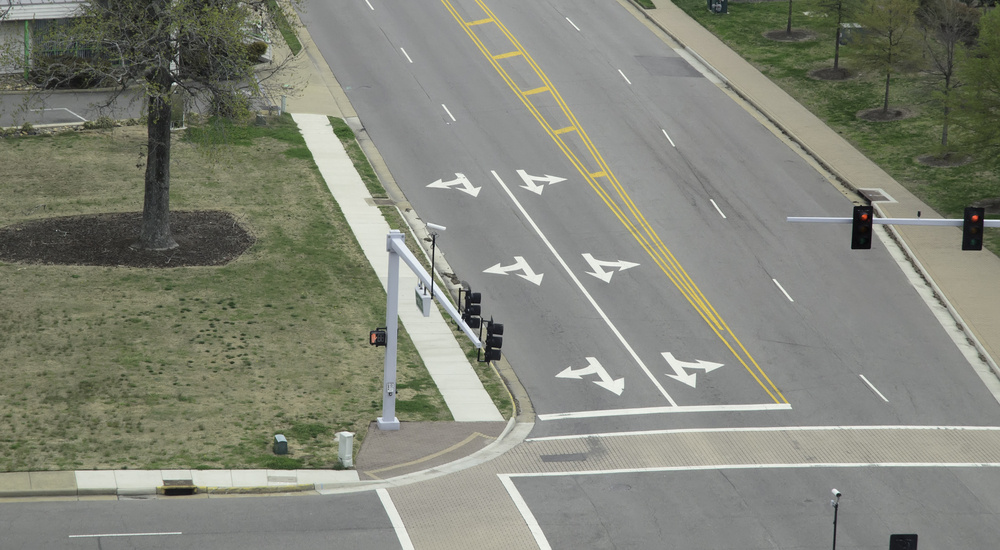-1.png?width=300&name=Photo%20from%20Unsplash%20(4)-1.png)
Adaptive Signal Timing
Improving Traffic Flow with Adaptive Signal Timing
The more cities and urban areas grow, the more traffic congestion issues and road safety concerns they face. Traditional traffic light systems operate on fixed schedules, leading to unnecessary stops, longer commutes, and increased frustration for drivers.
Adaptive Signal Timing (AST) is an advanced solution that uses real-time sensor data to adjust traffic signals, improve traffic flow, and increase safety.
Omnisight’s FusionSensor is designed to give cities and communities the means to improve AST management. By fusing radar and video, leveraging artificial intelligence (AI), and real-time data processing, these sensors make traffic systems more accurate, reliable, and efficient.
Improving Traffic Flow with Adaptive Signal Timing
Adaptive Signal Timing (AST) is an advanced solution that uses real-time sensor data to adjust traffic signals, improve traffic flow, and increase safety.
Omnisight’s FusionSensor is designed to give cities and communities the means to improve AST management. By fusing radar and video, leveraging artificial intelligence (AI), and real-time data processing, these sensors make traffic systems more accurate, reliable, and efficient.
What Is Adaptive Signal Timing?
Adaptive Signal Timing is a traffic control system that changes traffic light patterns based on what’s happening on the road at any given moment. Unlike traditional traffic signals that follow pre-set schedules, AST continuously collects data across multiple modes of transportation to adjust lights as conditions change.
In a typical AST setup, sensors placed at intersections detect vehicles, bikes, and pedestrians. The high-level traffic engineering system analyzes this data and updates signal timing to reduce congestion and improve traffic flow.
For example, if a sensor detects a long line of cars waiting at a red light, the system can extend the green light to clear the backup.
AST is useful in handling unexpected traffic impacts from accidents, roadwork, or sudden increases in traffic. It’s designed to adapt instantly, ensuring smoother commutes and safer roads.

Key Objectives & Benefits of Adaptive Signal Timing Systems
AST reduces congestion by adjusting green lights to match real-time traffic needs. This allows for a “green wave” effect; vehicles passing through multiple green lights at intersections, reducing idling and stops.
AST helps keep traffic moving smoothly, lowering the chances of motor vehicle crashes from sudden braking and rear-end collisions. AST systems can also manage signals intended for pedestrians and cyclists at intersections, improving road safety for all users.
AST integrates with other smart city solutions, such as parking management systems, pedestrian counting, and Vehicle-to-Everything (V2X) alerts.
Better traffic signal management helps combat stop-and-go driving and idling at red lights. It also contributes to reduced fuel consumption, decreased vehicle emissions, and cleaner city air.

We Drive Results
Through adaptive signal timing, we help your city reduce congestion, improve traffic flow, and enhance safety. Our solutions adjust to real-time conditions, ensuring smoother travel and a more responsive traffic network that meets the unique demands of your roads.
Optimize traffic flow and reduce congestion in urban areas by adjusting signal timing based on real-time traffic conditions. This enhances safety and efficiency for all road users, including vehicles, pedestrians, and cyclists, by accurately detecting and responding to their movements.
Improve intersection safety and reduce delays by coordinating signal timings across multiple intersections within a corridor. Ensure smooth traffic flow and minimizes congestion through adaptive signal control strategies tailored to specific traffic patterns.
Gain insights into traffic trends and plan for future needs by leveraging real-time data from the FusionSensor. By analyzing travel patterns, cities can optimize infrastructure, allocate resources efficiently, and make data-driven decisions for sustainable growth.
Integration
Omnisight integrates the FusionSensor using SDLC, NTCIP, and Contact Closure. These methodologies ensure a seamless and efficient development and integration process for traffic management solutions.For NEMA TS2 controllers, Omnisight’s FusionSensor supports advanced stop bar detection, pedestrian presence, and zone detection via the SDLC port. This integration enhances real-time traffic flow, improves safety measures for pedestrians, and increases overall intersection responsiveness.
NTCIP is a standard that facilitates interoperability among diverse traffic control devices, ensuring seamless integration and communication between systems from various manufacturers for effective and efficient traffic management solutions.
A contact closure conversion device can be used to convert detection signals from ethernet into contact closure signals for the traffic controller. The FusionSensor can be used with a NEMA TS1 traffic controller by installing a closure conversion device into the controller's cabinet
A Technology That Adapts to Your City’s Needs
-1.png?width=300&name=Fusion%20Sensor%20White%20(1)-1.png)
